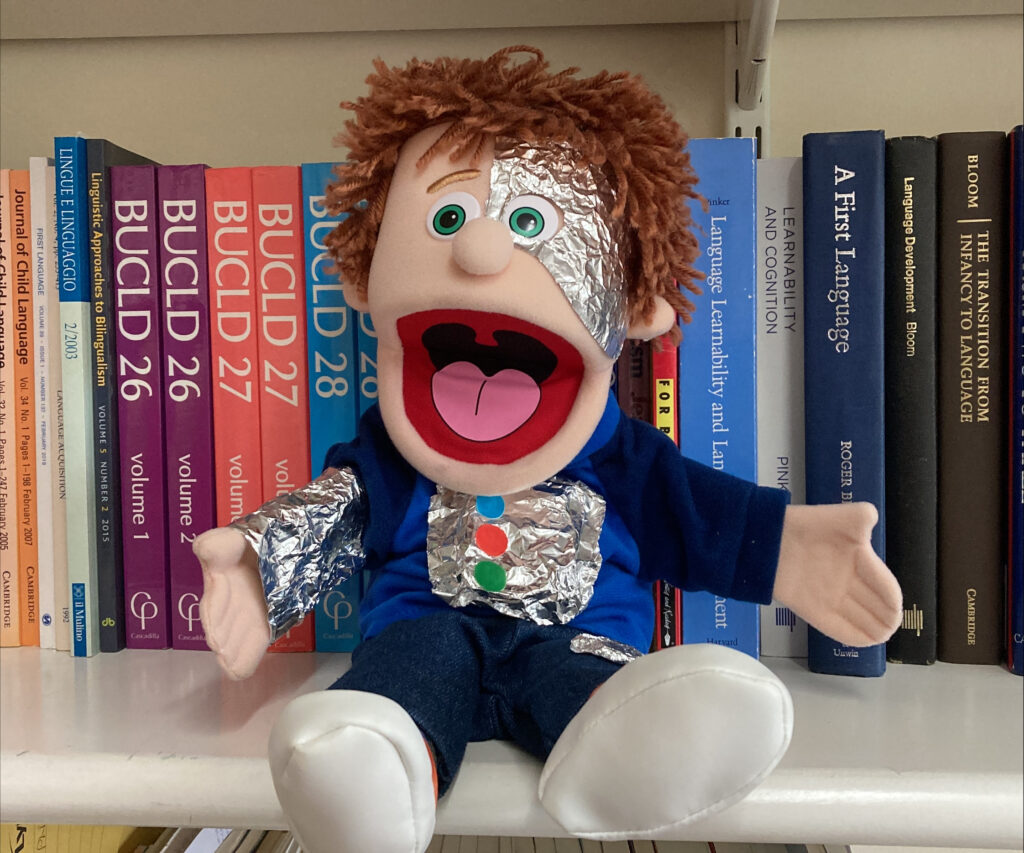One of the things I was most excited about when moving to Newcastle was being surrounded by the fabulous, famous, accent (indeed, accents) that you hear on the banks of the Tyne.
Don’t get me wrong, I have a massive amount of affection for the variety of Yorkshire accents that had been my soundtrack for over a decade, and I was learning so much more about the nuances of West Yorkshire accents living and playing in Leeds. But the Geordie accent was part of my childhood – my dad’s family are from North Tyneside – and I was so intrigued to see what our then 10-month-old would pick up from the local accent, which differs in so many ways from my generic Northern and his dad’s generic Midlands.
The result was, and continues to be, fascinating. At nursery three days a week with carers principally from Newcastle and South Tyneside, our wee one (we’ll call him Smidge here) developed a weekday vs weekend split, particularly with respect to the vowel in words like “book”.

Image credit: CC-BY-SA 2010 See-ming Lee 李思明 SML
In many British English accents, the vowel in “book” is what we call a near-close, near-back rounded vowel – listen and look here at my wonderful colleague, Prof. Ghada Khattab, producing it. To break it down, that means that the tongue is nearly touching the roof of the mouth (near-close) fairly near the back of the hard palate (near-back) and the lips are rounded (…well, rounded). Have a look at this MRI of the tongue in action during the production of vowels if you want to visualise this a bit more clearly. This vowel is represented by the symbol /ʊ/ in the International Phonetic Alphabet, so the word “book” is typically pronounced in English as /bʊk/.
Not so in Tyneside English, especially south of the river in South Tyneside, where [bu:ks]* are enjoyed. The vowel [u:] is a close back rounded lengthened vowel, so the tongue is very close** to the very back of the roof of the mouth, near the soft palate, the lips are rounded and the sound lasts a little longer.
Back to Smidge and his reading matter. He’s about 22 months old and he’s been at nursery Monday to Wednesday for about 2 months since it reopened after the first Covid lockdown (he’d managed all of about 6 weeks at nursery prior to it). Despite this brief and relatively late exposure to Tyneside English, he’s asking for [bu:ks] at the start of the week and [bʊks] by the end of the weekend…just in time to read [bu:ks] again with his carers the next week.
One of my colleagues in theoretical phonetics and phonology was quite surprised that such a young child had two such clear variants for the same vowel with, apparently, set days of the week for the use of each.
But for an acquisitionist it’s not quite so surprising, especially as it’s not really to do with the days of the week.
We know from studies of multilingual children that they distinguish their languages very early on – for example, they’re aware which of their conversational partners uses each of their languages and they choose their words according to the context. They also demonstrate their identity and social place by manipulating their language in their earliest school years.

Image from The Connection Between Multilingualism and Business Success (speexx.com)
It can be harder to see this in monolingual multidialectal children, simply because it can be less obvious when a child is using a particular accent or dialect, especially if their dialects share a number of features. However, we know that children acquire from their parents the stylistic and linguistic rules for certain dialect features from as young as 3 years old, especially ones that users are consciously aware of. At an even younger age, around two-and-a-half, children are sufficiently aware of the social status of different accents that they start to use the more prestigious dialect, even in places where the less prestigious dialect is used, like the home. And a little later, around age 4, children can identify different dialects and group language users according to the vowels they use in a range of words – that is, they’d be able to identify users of [bu:k] and [tɪʔkɪʔ] as a group distinct from users of [bʊk] and [tɪkɪʔ], assuming they had experience of Tyneside English.
So children know a *lot* more about language, and how we all use it, than they’re often given credit for.
Back to Smidge: what does he do now? He’s starting school in September and he is most commonly a [buk] reader – his vowel may be slightly shorter than that of a true Tynesider, but he’s definitely backer and closer than me and his dad. Of course, this isn’t “inappropriate” use or use of the “wrong” dialect, because the change in the vowel doesn’t obscure the meaning of the word for us [bʊk]-lovers. Moreover, we would *never* correct his pronunciation of a word like this, because we both believe that all accents and dialects are valid, and we want Smidge to develop his own style and to use it confidently. Ach, maybe that sounds very worthy, but it’s true – kids are aware enough to know when your corrections are based on understanding and when they’re based on prejudice. They’ve been around the block far too long to be hoodwinked.
* The lengthening diacritic in [u:] isn’t quite as we’d write it in the IPA – rather than a colon with two dots, it looks more like two triangles stacked on top of each other, pointing towards each other. But WordPress’s typefaces won’t play today – take a look at Watt and Allen’s (2003) illustration of Tyneside English for the accurate diacritics.
** Obviously the tongue in [u] isn’t fully closed against the roof of the mouth – a defining characteristic of a vowel is that there is no full closure between any articulators. If the tongue fully met the roof of the mouth here, you’d end up with a /k/ or /g/ (if you discount the lip rounding!).
A Bender-style note: The studies cited in the multilingualism paragraph concern communities using English/French and Light Warlpiri/Warlpiri/English. In the multidialectal paragraph studies concern communities using Buckie English/Standard Scots English, Dutch/Limburgish, and Yorkshire/Standard Southern British English.
And an Easter Egg: If you read the dialect-grouping study (Jeffries 2019), you’ll know that “[s]timuli for the experiment were recorded from one bidialectal speaker, a 25-year-old female, who was able to switch between two different accents and produce vowel pronunciations typical of both Yorkshire and the South East of England.” It was me!
